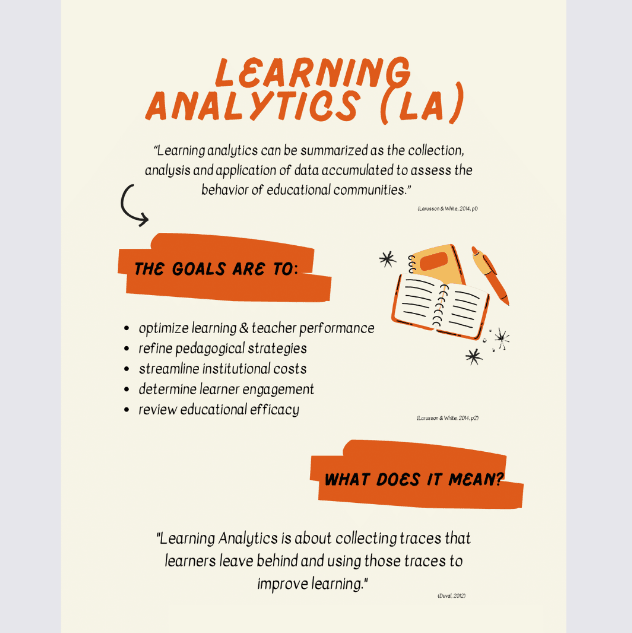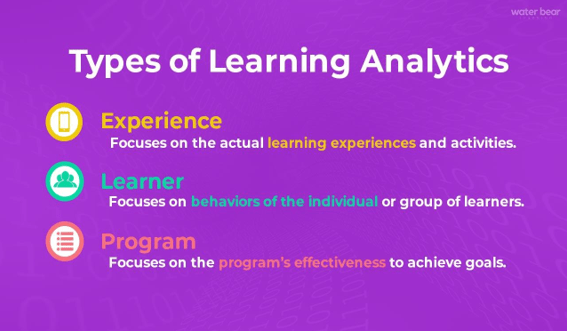Benefits of Learning Analytics for Young Learners
As technology advances rapidly, the education sector must keep up to offer the best learning experiences. One powerful tool in this technological shift is learning analytics. By using data to understand and improve learner performance, learning analytics can enhance education for all ages, from elementary school to higher education.
We’ll explore the benefits of learning analytics and why it’s crucial for education today and in the future, as early technology literacy equips learners with the skills they need to thrive in the digital age.
What is Learning Analytics?
Let’s start with the basics so we don’t have to go over the terminology again later. What exactly is learning analytics? Simply put, it’s an automated way to collect, measure, analyze, and present data about learners and their learning. This approach helps educators understand where learners are excelling and where they may need extra help. With a learning analytics platform, you can track various aspects of learner performance, such as grades, classroom engagement, and interaction with online materials.
If you don’t already have such a platform, don’t worry! By reading this blog article, you’ll learn how to create one and how it can benefit your school. For now, let’s look at the general benefits of learning analytics.

Source: digitallearninginstitute.com
5 Key Benefits of Learning Analytics
The implementation of learning analytics in higher education and schools has the potential to revolutionize education in the near future. And these aren’t just empty claims; let’s look at the facts:
- The global education and learning analytics market is growing It reached $35.5 billion in 2023 and is projected to grow to $128.6 billion by 2032.
- User penetration in the online education market is expected to reach 14.9% in 2024.
With learning analytics shaping the future of education, you can start reaping the benefits of this technology today. Plus, the projected benefits are quite compelling.
1. Learning becomes more personalized with learning analytics
Personalized learning is increasingly important in today’s diverse classrooms. This approach allows educators to tailor learning to the specific needs of each learner. In classrooms with more than 10 young learners, and sometimes as many as 23, it’s challenging for teachers to focus on each learner’s progress. However, with data analytics, educators can identify individual strengths and weaknesses, enabling them to customize instruction for greater effectiveness and engagement. The benefits of personalized learning include increased motivation and achievement for young learners.
2. You can intervene earlier and identify problems sooner
With real-time data, educators can quickly spot early signs of problems with specific topics or with learning in general. For example, a young learner may be subtly struggling with a subject or having difficulty concentrating, which is hindering their learning. By using learning analytics, educators can identify and address these issues early, preventing them from becoming more serious.
3. Young learners receive tailored support throughout their learning journey
Learning analytics can identify learners who are struggling, at risk of falling behind, or excelling in certain subjects. Once this data is available, tailored support such as tutoring and mentoring can be provided. For example, if a young learner shows an interest in math or technology, learning analytics can highlight this, allowing educators to offer additional IT training or support for a future career in IT. This approach benefits all learners, providing support for those who are struggling and targeted training for those with specific interests.
4. Learning analytics leads to informed decisions
This means that learning analytics for schools is about making decisions about curriculum, budget allocation, instructional time, and policy changes, rather than relying on guesswork. For example, if data shows that children excel in group or individual learning, institutions can adjust their approach to implement the most effective learning method.
5. Teaching strategies and techniques are getting better fast
And the significant advantage of improving these methods can’t be ignored. How we teach directly affects how well children learn. But what if our methods are old-fashioned, and we don’t realize it because of our biases, habits, or lack of data? This could hold back our progress.
Analytical data helps us implement more effective teaching methods (e.g., incorporating game-based learning) and understand what motivates kids to learn through the process and what doesn’t. Ultimately, learning analytics for schools or higher education, can reveal what is working well and what needs to be changed.
Learning Analytics Examples
Learning analytics examples are instances where learning analytics is used to improve learning outcomes. In the learning management system (LMS) environment, learning analytics is about gathering information about how learners behave, interact, and perform. This helps us understand how data-driven insights can improve teaching and learning in various educational settings. In short, these are real-world applications that demonstrate how learning analytics benefits education.

Source: waterbearlearning.com
- Predictive analytics: This helps educators predict how well learners will perform in their classes. By looking at historical data, teachers can identify which learners may need extra help and intervene early.
- Dashboard tools: Many schools and universities use dashboards to track attendance, grades, and participation. These tools, part of a learning analytics platform, help teachers spot trends and make smart decisions about how to teach.
- Engagement tracking: Learning management systems keep tabs on how learners interact with online lessons. Teachers can see how much time learners spend on different activities and adjust their teaching accordingly.
- Performance analytics: This shows how learners are performing on specific assignments or tests. It helps teachers identify which topics need more attention.
- Behavioral analytics: By studying learner behavior, such as how they participate in class or work in groups, teachers can better understand their learners and help them succeed. This is another crucial feature of learning analytics that benefits both schools and higher education institutions.
Conclusion
Learning analytics serves as a beacon of progress, especially for young learners in today’s digital environment where technology is increasingly reshaping global online education. By leveraging data-driven insights, educators can tailor learning experiences to meet the unique needs of each young learner, intervene early to address challenges, and make informed decisions about their education. This transformative tool empowers educational institutions to adapt and evolve, ultimately enhancing the learning journey for young learners in the digital age.




